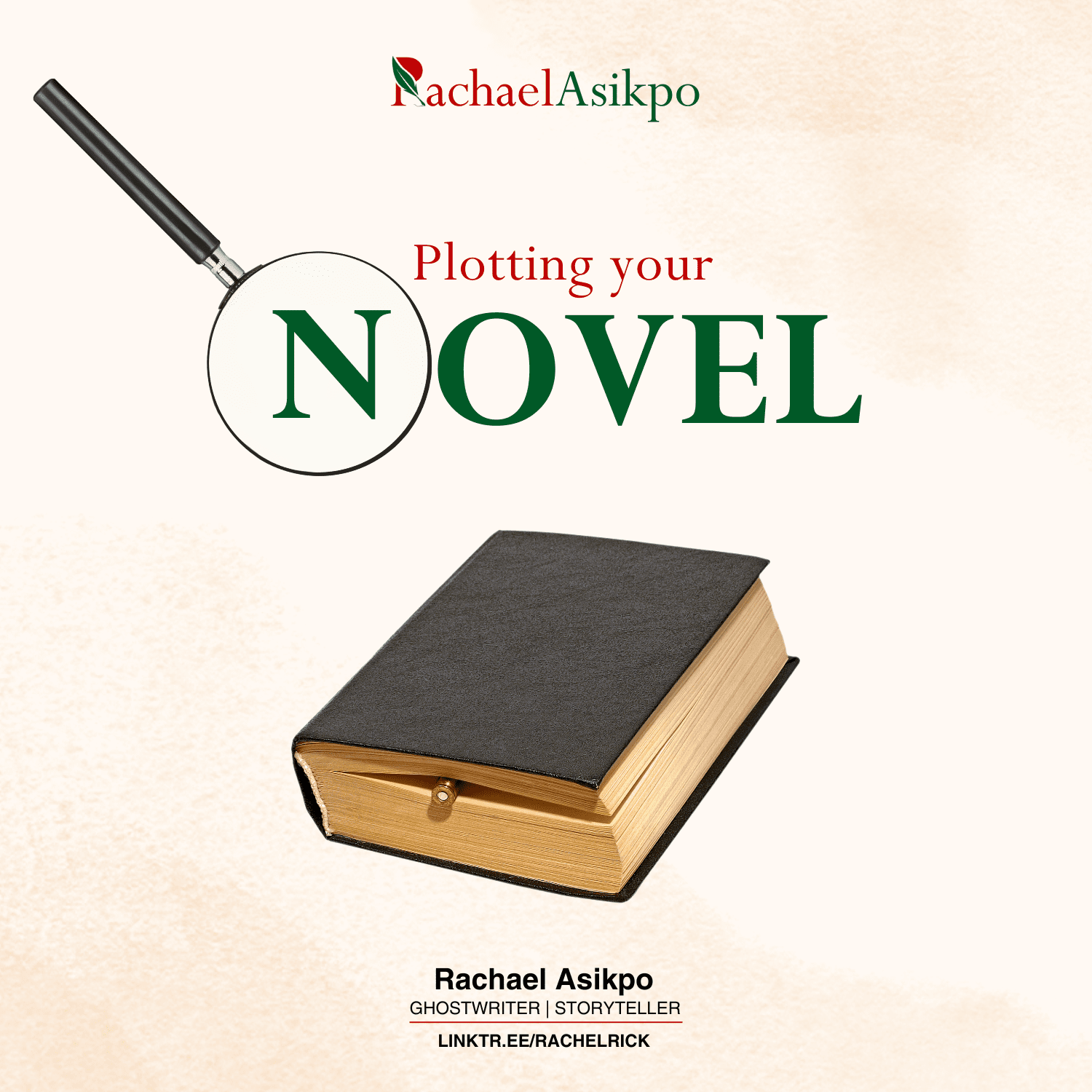A plot is a systematic arrangement of events that take place in the story. It’s a run down of events in a book from the beginning to the end.
It’s important that you get to know how to plot your book so that you don’t end up boring your readers.
𝗛𝗢𝗪 𝗗𝗢 𝗬𝗢𝗨 𝗣𝗟𝗢𝗧 𝗬𝗢𝗨𝗥 𝗡𝗢𝗩𝗘𝗟?
1) The Driving C𝗵𝗮𝗿𝗮𝗰𝘁𝗲𝗿(s) of Your Plot
Define him. Give him a status quo. Give him a quest. Make him want something he can’t get. Or give him a problem he will be committed to solving.
It’s advisable to introduce the problem at the beginning of the story. The beginning of the story should introduce your readers to your main characters and give them a distanced sighting of an impending problem(s). These problems could be linked to the motives of your main character. Your reader does not have to know or understand the entirety of the problem, because this naturally happens as the story evolves. In fact, things could take a twist and the problem shifts to something else.
However, your beginning should introduce important characters and as the story unravels, we should see how these characters are connected by that problem or those problems. Don’t start by giving a boring history of the character, start with an action scene that will help you effectively introduce the essence of that character at the beginning of the book. Note that as the character develops, they will learn and unlearn something, they will change.
The advantage of starting with an action scene is to catch your reader’s attention. Once you hold it, you can weave the scene to SHOW your reader the traits of your character, their personality and hints to their motives or what they should expect from that character. The motive of the character could even be expressed in what they are doing or usage of the scenery, etc. Don’t spend too much time telling us how he looks, don’t expose too much but give just enough for the scene, and as the story develops, they learn more about your character: their backgrounds, other traits, memories, hope and dreams, etc.
2) 𝗧𝗵𝗲 𝗺𝗶𝗱𝗱𝗹𝗲 of the Plot:
Here’s where things get a lot messier. Divide this section into mini plots to help you navigate.
Plotting methods vary for different writers but what holds true is that there is the BEGINNING, the MIDDLE, and the END in your plot. These three parts encompass the arrangement of events in your story.
𝗗𝗘𝗩𝗜𝗖𝗘𝗦 𝗧𝗢 𝗘𝗠𝗣𝗟𝗢𝗬 𝗜𝗡 YOUR PLOT:
1) 𝗧𝗥𝗔𝗨𝗠𝗔:
This is the time to make your character feel the weight of what he has done. Regret will stare at him in the face. He’ll start accepting his fate. He could also be traumatized as a result of other people’s actions.
2) 𝗔 𝗧𝗪𝗜𝗦𝗧
To twist a plot, you bring in something unexpected — an element of surprise. Your story should never go the way the readers expect it to. Nobody gets excited because he predicted the end of the story. Excitement comes when there is a twist, and all your expectations are dashed. You can make your protagonist, or someone who was seen as an ally throughout the story to suddenly become a villain and vice versa. You can employ the red herring technique, where you give the reader false clues to misinform him.
3) 𝗩𝗜𝗖𝗧𝗢𝗥𝗬/ 𝗙𝗔𝗜𝗟𝗨𝗥𝗘:
This is the part that determines whether the character wins or loses. He doesn’t always have to get what he wants. But whatever happens here there must be some sort of growth. The character will have to learn from his experiences. There is a change in the status quo based on experiences.
4) 𝗦𝗨𝗕 𝗣𝗟𝗢𝗧𝗦:
Subplots are elements you bring into the story to give it a three dimensional makeup. You bring in secondary characters and their own stories to help give more structure and complexity to the main plot.
5) 𝗙𝗟𝗔𝗦𝗛𝗕𝗔𝗖𝗞
You may employ a flashback technique. Tell us about the main character’s past life. This will help us to understand his personality more. How did he handle situations in his past? Is he always terrible at decision making? How has what happened in his previous relationship with a secondary character affected his present situation? Make sure the subplots connect with the main plot.
Remember that your main character’s interaction with secondary characters will help to reveal their true nature.
My name is Racheal Asikpo. I can take the creative weight of completing your stories. I can also give you 70% distance from the writing and research. I offer ghostwriting, developmental editing and copyediting services. How about you allow a fresh pair of eyes give you a fresh breath of air?
You can follow me on:
Linkedin or Facebook to know when I post.
I also write episodic shorts on Medium!
You can also reach out to me after perusing my profiles on my Linktree.
I look forward to hearing from you.

